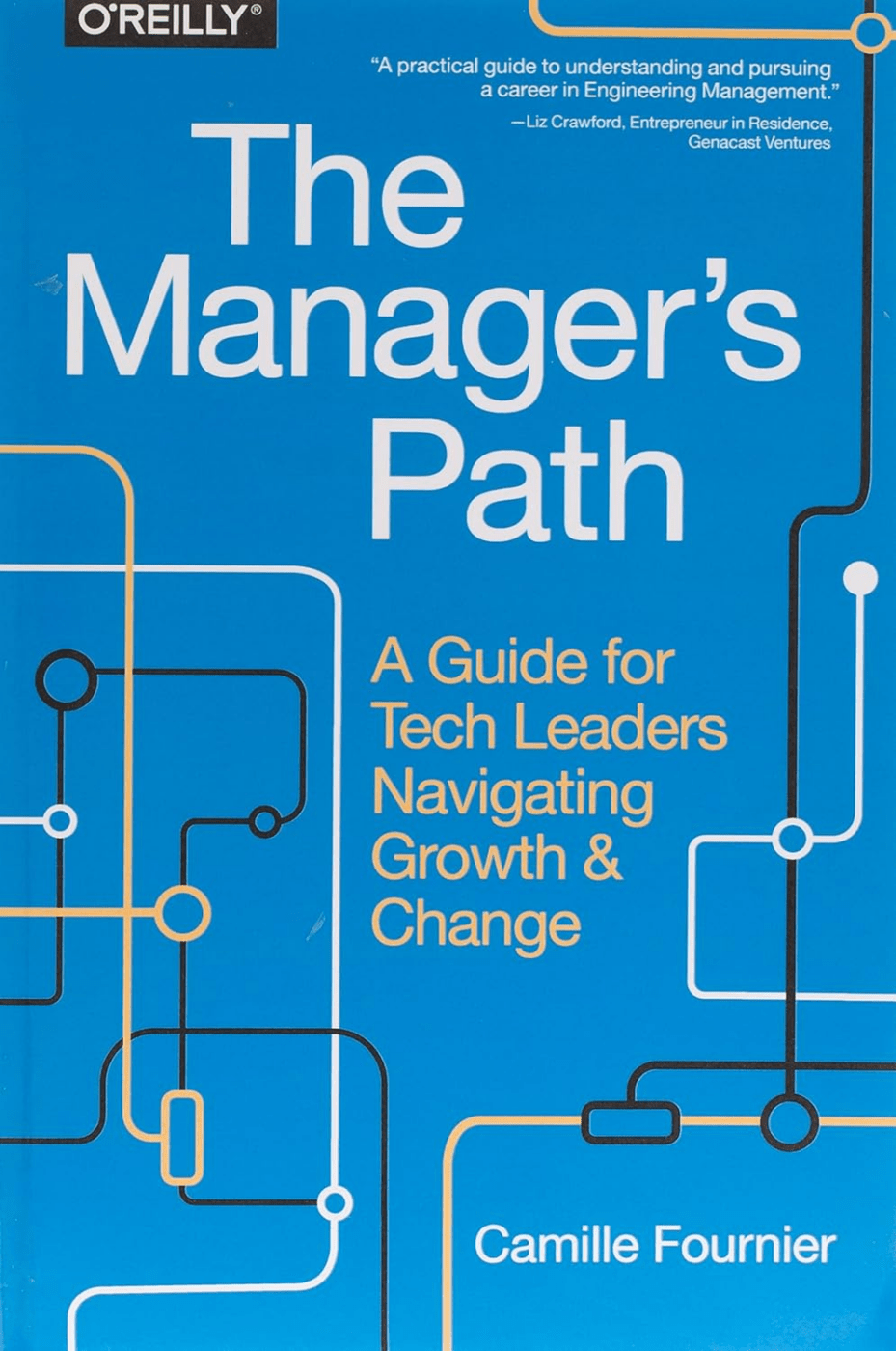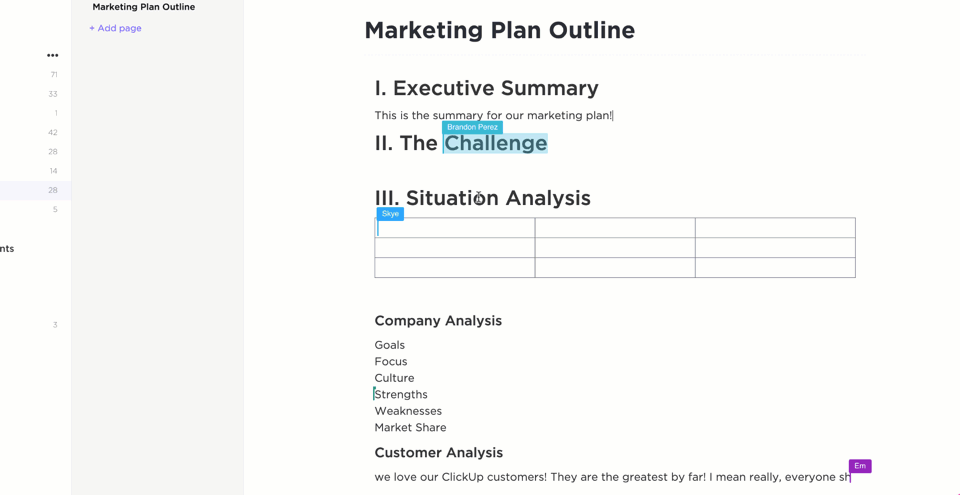The Manager’s Path Book Summary: Review and Key Takeaways

Sorry, there were no results found for “”
Sorry, there were no results found for “”
Sorry, there were no results found for “”
Are you an engineering director struggling to lead multiple tech teams? Do you want to navigate the complexities of your career successfully?
If you have a career in IT, tech, engineering, or management, you must’ve heard of or received recommendations about The Manager’s Path by Camille Fournier.
This book insightfully portrays tech leaders navigating growth. It is a powerful guide and motivator for anyone who seeks to develop their management philosophy.
Fournier, a seasoned tech leader herself, acknowledges the unique challenges individuals face transitioning from technical roles to leadership positions in an industry lacking sufficient leadership resources.
If you haven’t read this team management classic yet, worry not!
In our The Manager’s Path summary, we’ll help you adopt the best lessons from the book and tailor them to your management style.

The Manager’s Path by Camille Fournier can be your roadmap for becoming a successful leader in the tech industry success. It bridges the gap between technical expertise and the soft skills required to be a successful leader.
Fournier, a former tech CTO at Rent the Runway, expertly illustrates the challenges engineering managers face and offers advice for each career stage.
Her book unfolds like a mentor by your side, sharing wisdom gleaned from the trenches. It starts with the first steps of management, like becoming a mentor and guiding junior colleagues. You’ll learn to identify potential, nurture talent, and provide that crucial nudge that helps them shine.
As you progress, the challenges grow. The book equips you to tackle team dynamics, build a cohesive unit, and navigate inevitable conflicts. You’ll learn how to master the art of understanding your team’s needs and aspirations.
But leadership isn’t all about your team. There’s the company, too. The book offers insights into navigating complex company structures, understanding the big picture, and influencing decisions from a leadership standpoint.
The journey continues, taking you through the management ranks, from tech lead to senior roles. You’ll grapple with difficult questions:
The Manager’s Path emphasizes self-awareness throughout its pages. It reminds you that your manager is human, too, with their own challenges. It encourages you to take ownership of your career, communicate your goals, and be proactive in your development.
This book will equip you with the technical expertise for creating a collaborative team culture and the communication skills essential for managing multiple teams and excelling at your job.
The path to becoming a leader is not easy. Fournier lays down the essential chronologies of a manager’s path, specifically in an industry where leaders have fewer textbooks, tools, and frameworks to guide them.
We now present some key takeaways from The Manager’s Path summary.
New managers often feel the need to shield their teams from the pressures of the job. The book argues against this.
While it’s okay to protect your team from unnecessary stress, completely insulating them from work challenges can be detrimental to their growth.
Fournier suggests providing context about challenges to help teams understand the ‘why’ behind their work. This builds team accountability, making them more receptive to constructive criticism.
Finding a good manager can be tough. You might end up with someone who is neglectful or micromanages your every move.
So, what makes a good manager stand out?
Fournier lays it out plainly: Good managers actively invest in your growth. They conduct regular meetings to offer continuous feedback (both positive and constructive) and help you improve. Most importantly, they treat you with respect and create a safe environment.
Mentorship offers a unique opportunity to develop leadership skills in a low-stakes environment. Unlike formal management roles, the consequences of missteps are less severe, making it a perfect training ground.
Ideal mentor-mentee pairings often develop organically. A senior engineer might naturally guide a junior colleague towards greater productivity. These mutually beneficial relationships thrive on a foundation of shared interest. However, forced pairings can prove ineffective. Not everyone requires a mentor, and some pairings may lack synergy.
Fournier identifies the ‘alpha geek’—a personality type that prioritizes intelligence and technical prowess. These individuals often portray themselves as infallible, undermining their colleagues’ work and often rewriting code without warning.
Though they’re difficult to work with and make bad managers, alpha geeks can benefit from mentorship. Learning communication and listening skills can transform them from individuals boasting knowledge into leaders who value collaboration.
Pro-tip: Use these free project communication plan templates to create a comprehensive strategy that everyone follows!
The title ‘tech lead’ may reference a singular stage on a technical career or ladder, appearing as a pinnacle of technical expertise, but Fournier shatters this misconception. She argues that a Tech Lead isn’t a destination but a unique ‘set of responsibilities.’
Tech leaders navigating growth wear multiple hats. They continue to write code and stay current with technical upgrades. But they’re also a bridge between their team and management, translating technical intricacies and advocating for their team’s needs.
While technical decision-making remains a core function, the role involves empowering team members and clearing roadblocks that hinder their progress. It’s a complex balancing act.
Fournier offers a cautionary tale: some tech leads feel compelled to tackle every obstacle themselves and burn the midnight oil. She emphasizes that this isn’t a badge of honor.
Strong engineering managers should leverage their team’s talents and create a collaborative environment where everyone thrives.
Pro-tip: Create the right team structure for your company by choosing from these eight types.
Fournier uses the term ‘engineering lead’ to describe managing up at work. One of her core tenets is for engineering leads to prioritize staying technically relevant. This makes perfect sense because you can’t effectively guide your team if you’re out of touch with the intricacies of their work.
This challenge intensifies when you hire new faces. Building trust and rapport becomes paramount. She suggests open communication techniques, such as asking targeted questions.
For example, do they prefer in-person feedback or email feedback? Do they dislike specific management behaviors such as skipping one-on-one meetings? Understanding these preferences paves the way for a more collaborative dynamic.
Onboarding new hires smoothly is another critical aspect of team leadership. Fournier advocates for creating a clear 30-60-90-day plan with achievable goals, ideally benchmarked against the experiences of previous hires. This structured approach sets clear expectations and identifies potential mismatches early on.
Unlike general senior leadership roles, technical senior leadership demands a unique focus. The book dives into the specific duties that fall under this umbrella.
Firstly, there’s top-level management in research and development. These leaders champion experimentation and prioritize cutting-edge solutions to propel the company forward.
On the other hand, tech visionaries predict how technology can revolutionize the business and identify strategic growth opportunities.
Strong technical leaders are organizational savvy. They ensure projects are appropriately staffed and have the right talent in the right place to deliver success.
Transforming grand visions into reality requires flawless execution.
Here, leaders excel at planning, prioritizing tasks, and coordinating efforts across multiple teams. They are the company’s tech evangelists, adept at representing the product at client meetings and generating enthusiasm.
Fournier acknowledges that crafting a winning strategy is the cornerstone of senior leadership.
Cultivating healthy teams hinges on understanding your company’s core values and a culture that reflects them. For Fournier, culture is the invisible glue that binds a team—the unspoken rules that guide professional behavior.
A good career ladder is a cultural tool. It outlines the path for professional growth within your company, impacting hiring managers on aspects such as hiring, performance reviews, and promotions.
So, how do you craft a career ladder that empowers your team?
Collaboration is key. Solicit feedback from senior managers and engineers, incorporating their insights into the framework.
Research other companies and use their examples to create best practices. Consider how career paths in your company align with the overall compensation structure, typically with salary bands assigned to each level.
If your company follows a flat hierarchy, then you must acknowledge that performance reviews within a single level can vary. Your career growth plan should be flexible enough to accommodate this.
For example, engineering management, while challenging, can be a natural progression for those seeking professional growth.
Your management style changes while managing different teams. The Manager’s Path encourages you to adapt its principles to suit your management work style best.
Here’s a look at the most popular quotes from this book that’ll motivate you to pick it up for your next reading session:
There’s nothing worse than feeling like you can’t make a single decision on your own or feeling like every single piece of work you do has to be double- and triple-checked by your manager.
This quote highlights how micromanagement can stifle creativity and initiative. It sends the wrong message that you don’t trust your team’s abilities, leading to feelings of frustration and disengagement for your engineering team.
The best way to manage people is to manage yourself first.
Leaders lead by example. By managing your time, emotions, and priorities effectively, you model these behaviors for your team, fostering a culture of self-awareness and accountability.
Don’t rely exclusively on consensus or voting. It can lead to watered-down decisions that nobody is really happy with.
While collaboration is important, managers use effective leadership strategies to take decisive calls. Consensus-based decision-making can often lead projects to mediocrity and hinder progress.
The idea that the tech lead role should automatically be given to the most experienced engineer, the one who can handle the most complex features or who writes the best code, is a common misconception that even experienced managers fall for.
This quote debunks the myth that technical expertise alone qualifies someone for a tech lead role. Effective tech leads need to possess strong leadership and communication skills in addition to technical knowledge.
Brilliant jerks are high performers who are also jerks. They are typically very intelligent and can deliver impressive results, but they leave a trail of misery in their wake. Do not promote brilliant jerks.
This quote offers a cautionary note about prioritizing emotional intelligence and creating a positive team dynamic. While strong technical skills are valuable, a leader who creates a toxic environment ultimately hinders overall success.
While these quotes can help you remember and reflect upon the core managerial tenets highlighted in the book, you need the right tools to implement them as a tech leader.
ClickUp’s Project Management Software offers many features to help you translate The Manager’s Path principles into action.
The platform can help you build a culture of transparency, empower team members, and create a supportive work environment.
As an advanced project management platform, ClickUp is based on the ethos of fair work practices, offering visibility and clarity to all levels in your workforce.
With 15+ flexible ClickUp Views, you can build customized workflows for your team. This will give you granular access to everyone’s work schedules and projects, allowing you to track and monitor results in real-time.

Here’s a breakdown of using flexible views to your advantage:
The Manager’s Path underscores the importance of a team leader breaking down silos with better collaboration.
Creating a safe environment for the non-communicators and protecting the work culture from disrespectful employees is not easy.
Here, ClickUp Docs and ClickUp Chat View can help you bridge communication gaps and tactfully deal with team disruptors.

Collaboration detection helps you collaborate with your team members in Docs by letting you write, edit, or brainstorm ideas.
You can create beautifully designed web pages or wikis and share them with your direct reports. To motivate your employees, mention people in comments to give instant positive feedback.
You can also link docs and tasks to access shared or created information related to one project.

Use real-time chat channels in ClickUp to improve team communication. You can add anyone to work conversations with @mentions and assign comments to keep your team moving on action items.
You can also address quick questions, share updates, and corrective feedback, and provide clarifications quickly, keeping the momentum going. This aligns with Fournier’s message of open and timely communication.
Informal communication can build rapport and camaraderie within your team. Sharing quick wins, offering encouragement, or simply having a casual conversation can infuse positivity into your work environment.
The Manager’s Path highlights the importance of managing a team and culture, and the Chat View acts as a tool to cultivate this culture of human connection.
With a bevy of collaboration tools on ClickUp, you can not only communicate and build transparency but also effortlessly manage people through your company’s tech hierarchy.
The library of ready-to-use, highly customizable templates on ClickUp can help you save time and instantly get started on management basics.
Laying a foundation for success is made easier with the ClickUp Team Management Plan Template.
This template perfectly embodies the philosophy of The Manager’s Path. It guides you to establish clear goals for your team, which is a crucial first step.
You can easily outline roles and responsibilities, ensuring everyone understands their part and how it contributes to the bigger picture. Team members take charge of their work and are empowered to take initiative and excel.
Within this template, you can:
Finally, the template facilitates the creation of clear communication protocols.
Just as The Manager’s Path advocates for open communication, this template sets expectations for information sharing, promoting transparency, and reducing confusion within the team.
For fast-paced environments, The Manager’s Path tells you of the need for adaptable leadership—we’ve got a template that helps you address this, too.
Visualize your product roadmap and clearly view the long-term vision with ClickUp’s Agile Team Roadmap Template.
By breaking down features into manageable tasks, you can ensure everyone is on track with the immediate steps required to achieve the larger goals.
With this template, you can:
This transparency forms trust and keeps everyone aligned, even as priorities evolve. The iterative nature of agile development, a core aspect of this template, allows for adjustments to be made as needed, syncing with the need for adaptability highlighted in The Manager’s Path.
Another core tenet of The Manager’s Path is open communication, which builds successful teams. ClickUp’s Team Communication and Meeting Matrix Template can help you achieve that!
No more deciphering cryptic emails or wondering where to find crucial updates. This template establishes clear ‘communication channels’—think designated walkie-talkies for different types of information.
You can stay ahead of all urgent matters through this real-time tool, while in-depth discussions can be kept for dedicated meetings. This ensures everyone receives the information they need in the most efficient way possible.
Fournier stresses the importance of one-on-one meetings to ensure each team member feels valued. This template reminds you to schedule these crucial chats and keep track of your talking points.
With this template,
Imagine a team member brimming with ideas but hesitant to speak up in a larger group. A scheduled one-on-one—created with the template—provides a safe space for open discussions and valuable feedback exchange.
Fournier sums it up well, “A manager’s job involves making it easy for her employees to get things done by creating fertile environments in which work can happen.”
ClickUp helps you do that and more!
Fournier’s wisdom extends beyond theory: The book offers practical frameworks and actionable advice. The Manager’s Path aims to improve yur professional growth by maintaining technical focus and keeping your team members engaged and motivated.
This book is a valuable guide, but it’s just a starting point. You need modern project management platforms that offer diverse functionalities to empower managers and streamline team workflows.
By harnessing the power of ClickUp, you can take your tech team from being a hardworking group to a high-performing unit, working collaboratively and efficiently to achieve extraordinary results. Sign up on ClickUp today and embrace the key principles of The Manager’s Path by putting them into action!
© 2026 ClickUp